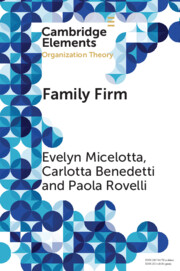Element contents
Family Firm
Published online by Cambridge University Press: 30 January 2023
Summary
- Type
- Element
- Information
- Series: Elements in Organization TheoryOnline ISBN: 9781009083461Publisher: Cambridge University PressPrint publication: 02 March 2023



